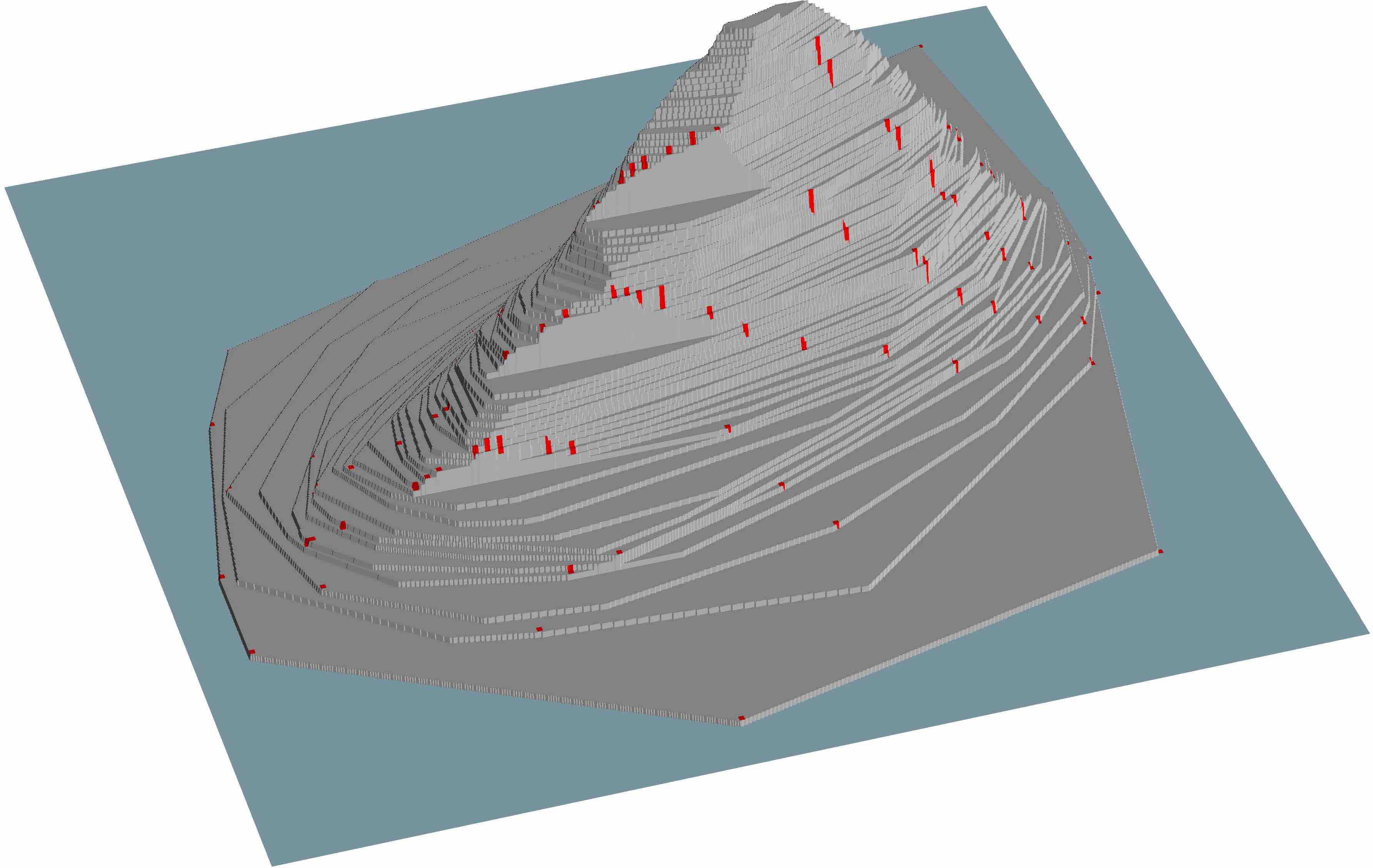Mahalanobis depth#
- DepthEucl.mahalanobis(x: ndarray | None = None, exact: bool = True, mah_estimate: Literal['none', 'moment', 'mcd'] = 'moment', mah_parMcd: float = 0.75, solver='neldermead', NRandom=1000, n_refinements=10, sphcap_shrink=0.5, alpha_Dirichlet=1.25, cooling_factor=0.95, cap_size=1, start='mean', space='sphere', line_solver='goldensection', bound_gc=True, output_option: Literal['lowest_depth', 'final_depht_dir', 'all_depth', 'all_depth_directions'] = 'final_depht_dir', evaluate_dataset: bool = False)[source]
Calculates the Mahalanobis depth of points w.r.t. a multivariate data set.
- Arguments
- x: array-like or None, default=None
Matrix of objects (numerical vector as one object) whose depth is to be calculated; each row contains a d-variate point. Should have the same dimension as data.
- exactbool, delfaut=True
The type of the used method. The default is
exact=False, which leads to approx- imate computation of the Mahalanobis depth using the method defined by the argumentsolver. Ifexact=True, the Mahalanobis depth is computed exactly, using the closed-form expression.- mah_estimatestr, {“moment”, “mcd”}, default=”moment”
A character string specifying which estimates to use when calculating the Mahalanobis depth; can be “‘moment’” or
'MCD', determining whether traditional moment or Minimum Covariance Determinant (MCD) estimates for mean and covariance are used. By default'moment'is used.- mah_parMcdfloat, default=0.75
is the value of the argument alpha for the function covMcd; is used when mah.estimate =
'MCD'.- solverstr, default=”neldermead”
The type of solver used to approximate the depth. {
'simplegrid','refinedgrid','simplerandom','refinedrandom','coordinatedescent','randomsimplices','neldermead','simulatedannealing'}- NRandomint, default=1000
The total number of iterations to compute the depth. Some solvers are converging faster so they are run several time to achieve
NRandomiterations.- n_refinementsint, default = 10
Set the maximum of iteration for computing the depth of one point. For
solver='refinedrandom'or'refinedgrid'.- sphcap_shrinkfloat, default = 0.5
It’s the shrinking of the spherical cap. For
solver='refinedrandom'or'refinedgrid'.- alpha_Dirichletfloat, default = 1.25
It’s the parameter of the Dirichlet distribution. For
solver='randomsimplices'.- cooling_factorfloat, default = 0.95
It’s the cooling factor. For
solver='simulatedannealing'.- cap_sizeint | float, default = 1
It’s the size of the spherical cap. For
solver='simulatedannealing'or'neldermead'.- startstr {‘mean’, ‘random’}, default = mean
For
solver='simulatedannealing'or'neldermead', it’s the method used to compute the first depth.- spacestr {‘sphere’, ‘euclidean’}, default = ‘sphere’
For
solver='coordinatedescent'or'neldermead', it’s the type of spacecin which the solver is running.- line_solverstr {‘uniform’, ‘goldensection’}, default = goldensection
For
solver='coordinatedescent', it’s the line searh strategy used by this solver.- bound_gcbool, default = True
For
solver='neldermead', it’sTrueif the search is limited to the closed hemisphere.- output_optionstr {“lowest_depth”,”final_depht_dir”,”all_depth”,”all_depth_directions}, default = final_depht_dir
Determines what will be computated alongside with the final depth | If
output_option=lowest_depth, only approximated depths are returned. | Ifoutput_option=final_depht_dir, best directions to approximate depths are also returned. | Ifoutput_option=all_depth, depths calculated at every iteration are also returned. | Ifoutput_option=all_depth_directions, random directions used to project depths are also returned with indices of converging for the solver selected.- evaluate_datasetbool, default=False
Determines if dataset loaded will be evaluated. Automatically sets x to dataset
- References
Mahalanobis, P. C. (1936). On the generalized distance in statistics. Proceedings of the National Institute of Sciences of India, 12, 49–55.
Mosler, K. and Mozharovskyi, P. (2022). Choosing among notions of multivariate depth statistics. Statistical Science, 37(3), 348-368.
- Examples
>>> import numpy as np >>> from depth.model import DepthEucl >>> mat1=[[1, 0, 0, 0, 0],[0, 2, 0, 0, 0],[0, 0, 3, 0, 0],[0, 0, 0, 2, 0],[0, 0, 0, 0, 1]] >>> mat2=[[1, 0, 0, 0, 0],[0, 1, 0, 0, 0],[0, 0, 1, 0, 0],[0, 0, 0, 1, 0],[0, 0, 0, 0, 1]] >>> np.random.seed(0) >>> x = np.random.multivariate_normal([1,1,1,1,1], mat2, 10) >>> data = np.random.multivariate_normal([0,0,0,0,0], mat1, 1000) >>> model = DepthEucl().load_dataset(data) >>> model.mahalanobis(x) [0.17849871 0.10412453 0.1331417 0.13578021 0.3154836 0.29103769 0.13398989 0.13913017 0.59339051 0.10556139] >>> model.mahalanobisDepth [0.17849871 0.10412453 0.1331417 0.13578021 0.3154836 0.29103769 0.13398989 0.13913017 0.59339051 0.10556139] >>> model.mahalanobis(x, exact="True", mah_estimate="MCD", mah_parMcd = 0.75) [0.17758703 0.10367974 0.131705 0.13575221 0.31847867 0.29034948 0.13291613 0.13792774 0.59094958 0.10491694]
